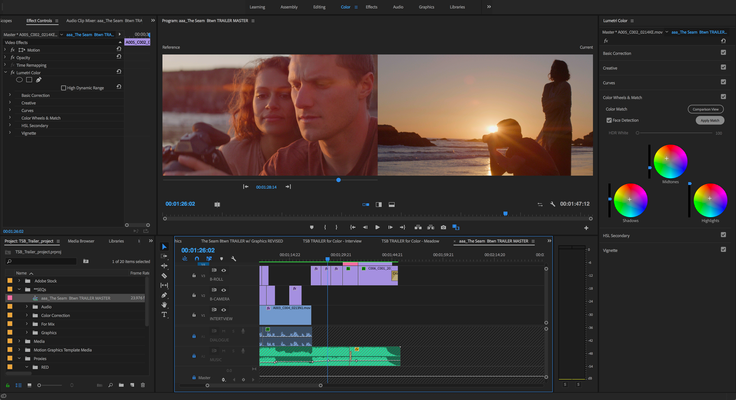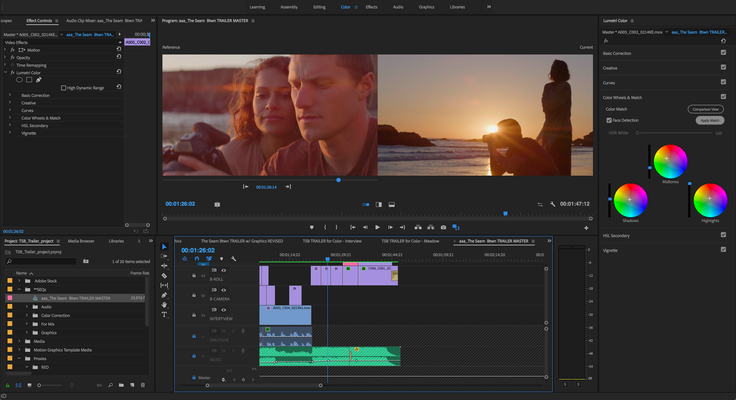
Right in time for NAB, Adobe today announced the latest updates to its Premiere CC and After Effects CC video editing and motion graphics tools. The general theme of this release is the introduction of two new AI-powered tools that will make the life of editors easier, as well as a variety of small updates that all result in an improved overall workflow.
“The demands and pace of video content creation are reaching levels we’ve never seen before. The time pressure on video professionals means the need for powerful and efficient creative tools has never been greater,” said Steven Warner, vice president of digital video and audio at Adobe. “Adobe video apps like Premiere Pro and After Effects give them that power which, combined with the services available in Creative Cloud, provides broadcasters, media companies, filmmakers and YouTubers a complete ecosystem to bring their stories to screen faster than ever.”
The standout feature of this release is the new Color Match feature in Premiere Pro CC. When you shoot with multiple cameras — and especially cameras from different brands — the colors between shots usually don’t match. It’s then the editor’s job to make everything look right, which can be a rather tedious job. Now, Adobe is using its Sensei AI platform to help editors match colors automatically, so that the changes they need to make are pretty small.
The company is also bringing face detection to Premiere Pro, which will make it easier to adjust skin tones between shots.
The second new AI-driven feature is an improved audio autoducking feature that also leverages Sensei. The system intelligently reduces the volume of the music or effects soundtrack around dialog, though editors can always manually override any of these changes.
Unsurprisingly, this release also includes plenty of other updates. Adobe is launching a deeper integration with Adobe Stock, for example, to give its users direct access to the footage and Motion Graphics templates available in the service. Those Motion Graphics, which allow you to mix animations or graphics and videos for title sequences or callouts inside a video, are also getting an update with new controls for positioning them, among other things. Editors who are experimenting with storytelling in VR now get an improved version of the Adobe Immersive Environment to allow them to edit right in VR. And with this update, these editors can now also use a Windows Mixed Reality headset to edit.
The highlight of the new release of After Effects CC is probable the enhanced Puppet Engine. This feature now makes it easier to create organic looking and realistic effects when you have layers like a fluttering flag or ripples on water.
Editors who need to build data-driven animations can now also import JSON and CSV files to create graphics and timelines.
Adobe Character Animator CC, the tool behind shows like “Our Cartoon President” is also getting a refresh with improvements across the board. These include the inclusion of new puppet templates to help you get started, improved particle physics to add dynamic elements like snowfall or collapsing brick walls to your animations, and overall improvements to how the puppets behave when you animate them.


